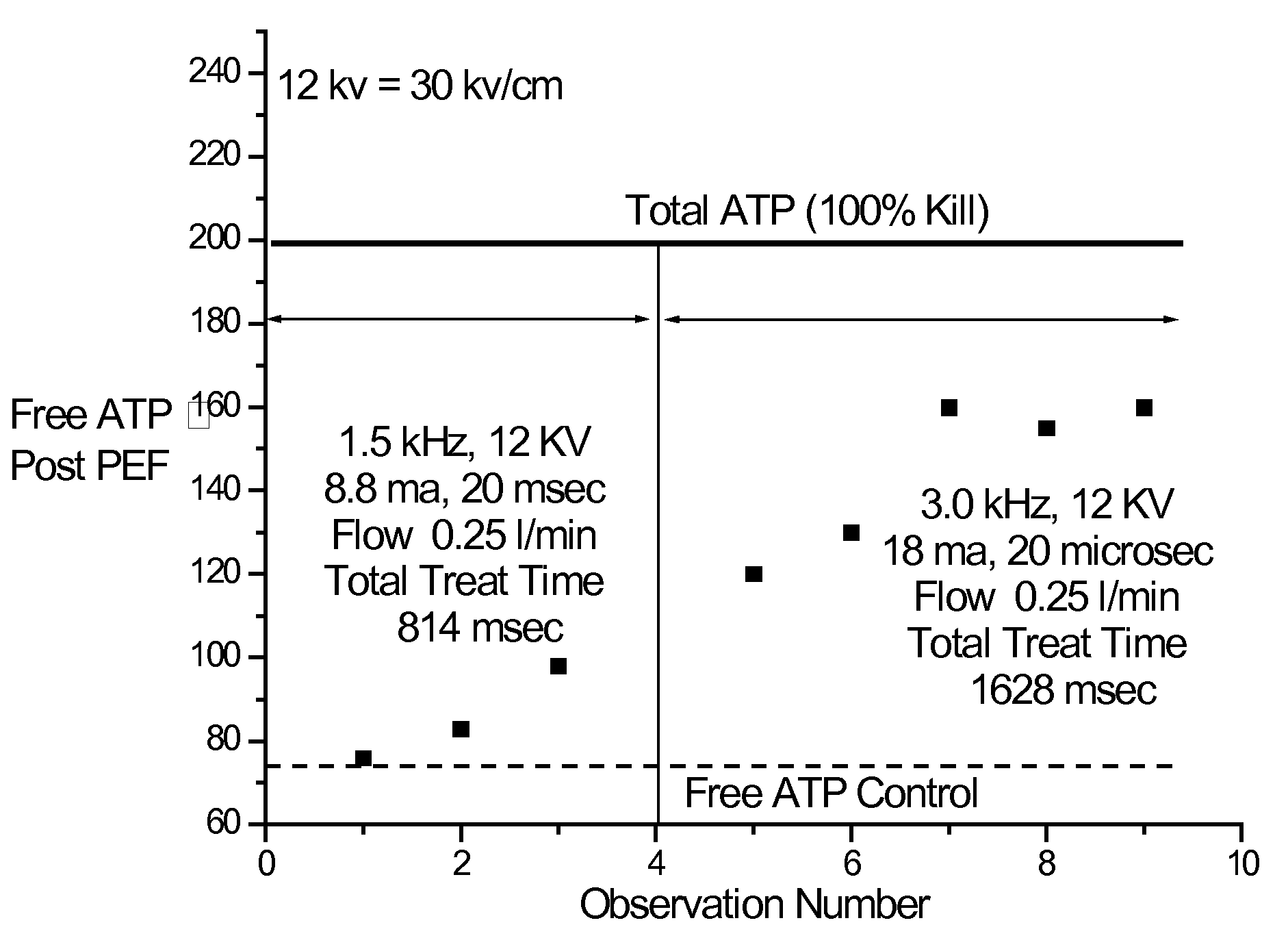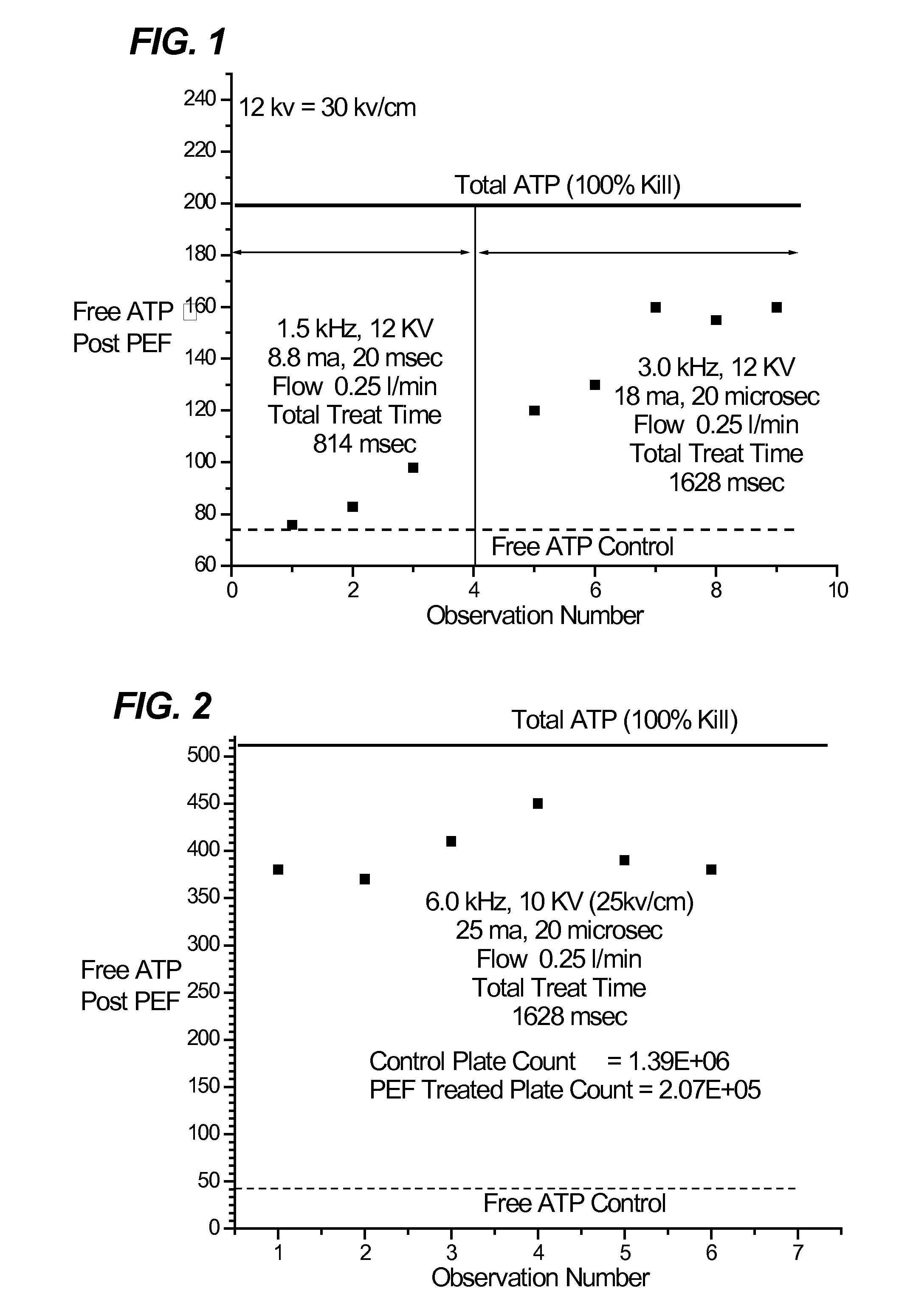Process for the reduction of biofouling using electric fields
a technology of electric field and biofouling, which is applied in the direction of electrolysis, water/sewage treatment, osmosis/dialysis, etc., can solve the problem that the microorganism cannot create a restricting biofilm upon or within the process equipment, and achieve the effect of effectively removing viable or viability-sustaining microorganisms, reducing lethal field strength, and reducing chemical dose rates
- Summary
- Abstract
- Description
- Claims
- Application Information
AI Technical Summary
Benefits of technology
Problems solved by technology
Method used
Image
Examples
examples
[0031]The following is an example of the effectiveness of the pulsed power systems described in this invention.
[0032]To test the efficacy of the inventive method, a series of tests were completed using ATP (Adeninetriphosphate). Two ATP tests were made. In the first, a “free” or “background” ATP measurement is made before and after subjecting the sample to a pulsed electric field (PEF) cell. In this way, the increase in “free” ATP affected by the PEF cell is determined. A second ATP test is made to determine the “total” ATP in the sample. By comparing post PEF treated ATP values to the total entitlement value, one can deduce the fraction of the total entitlement achieved by PEF treatment. When total and free ATP measurements are equal, all the cells in the sample have been lysed.
[0033]In some cases, plate count data was obtained, but there was usually a discrepancy between results obtained via ATP and the plate counts. The reason(s) for the differences are unclear, but may be relate...
PUM
| Property | Measurement | Unit |
|---|---|---|
| residence or transit time | aaaaa | aaaaa |
| transit time | aaaaa | aaaaa |
| microbial fouling | aaaaa | aaaaa |
Abstract
Description
Claims
Application Information
 Login to View More
Login to View More - R&D
- Intellectual Property
- Life Sciences
- Materials
- Tech Scout
- Unparalleled Data Quality
- Higher Quality Content
- 60% Fewer Hallucinations
Browse by: Latest US Patents, China's latest patents, Technical Efficacy Thesaurus, Application Domain, Technology Topic, Popular Technical Reports.
© 2025 PatSnap. All rights reserved.Legal|Privacy policy|Modern Slavery Act Transparency Statement|Sitemap|About US| Contact US: help@patsnap.com


